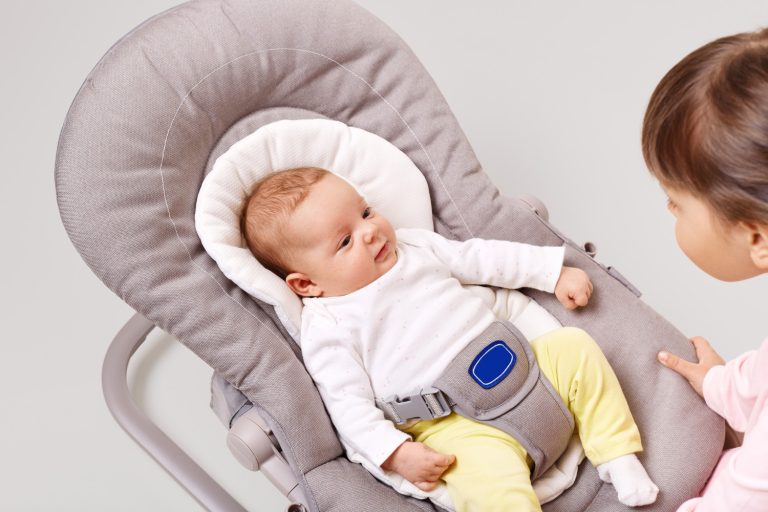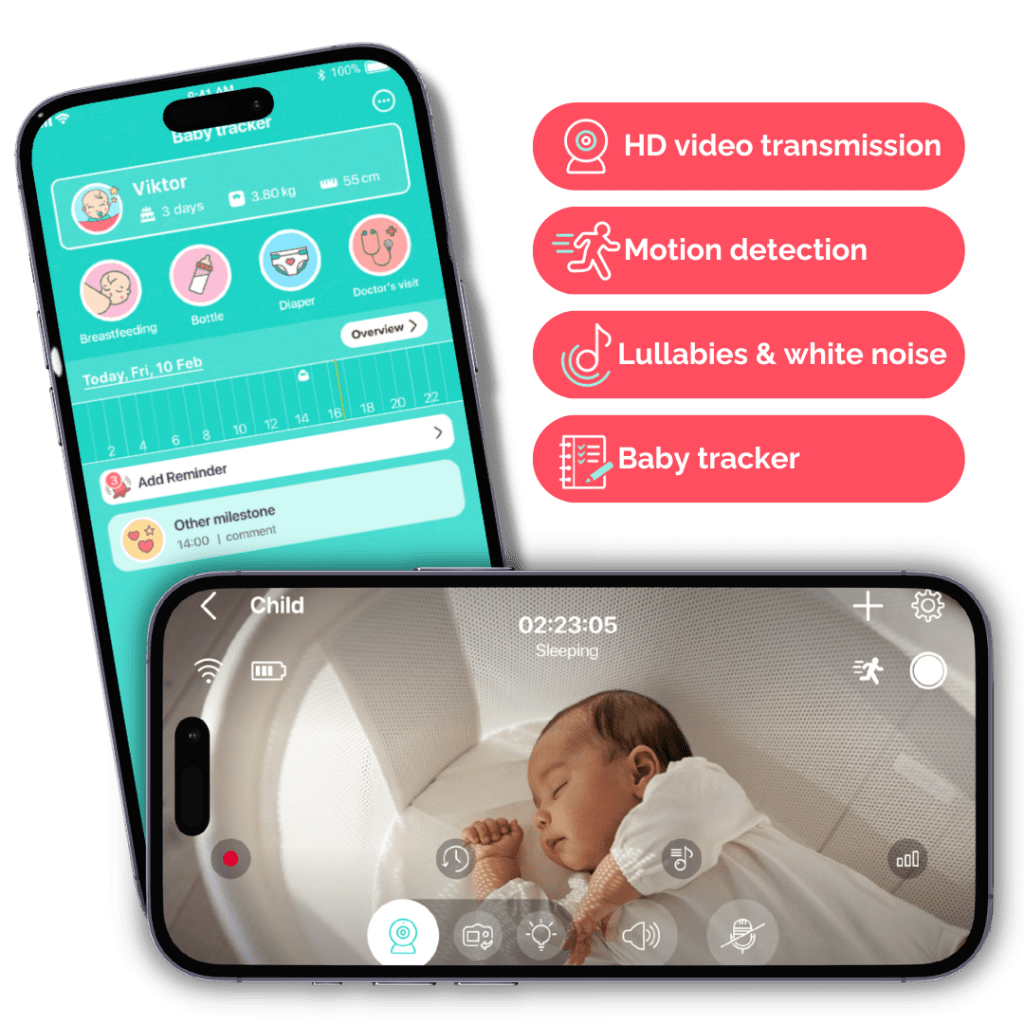
The Ultimate Guide to Understanding the Weight Limit on Baby Swings
- Created:
11. 10. 2023 - Updated:
9. 11. 2023
Without a doubt:
Baby swings are convenient, especially for parents trying to calm their little bundles of joy.
However:
Albeit a blessing, it can easily go south if you don’t look out for your child’s safety. And to do this, you must consider the weight limit on baby swings before purchasing them.
So, how do you go about this?
Keep reading to discover how to check the weight limit on baby swings and alternatives for ensuring your baby’s safety.
Typical Weight Limits for Baby Swings
For starters:
The weight limit for baby swings depends on various factors, including the strength of the swing and its material. That means that the stronger a baby swing is or the higher the quality of the swing’s material, the more weight it can carry.
With that said:
Various manufacturers use different types of materials to produce their baby swings. So, the strength or weight limit baby swings varies between brands or models.
To this effect:
You should avoid guessing the weight limit of a swing simply because it looks similar to another.
Nevertheless:
Baby swings can generally carry infants right from when they’re born till they reach around 25 pounds.
Below is a table of the weight limits for different types of baby swings:
| Baby Swing | Maximum Weight Limit |
|---|---|
| Maxi-Cosi Cassia Baby Swing | 20 pounds |
| Nova Baby Swing for Newborns | 20 pounds |
| Graco Simple Sway Baby Swing | 30 pounds |
| Babybond Baby Swing | 27 pounds |
| Dream On Me Zazu Baby Swing | 25 pounds |
How to Check the Weight Limit on Baby Swing
Listen up:
Checking the weight limit on your baby swing is no difficult task. It just requires you to know where to look.
Now:
You can easily check the weight limit of a swing before purchasing it online or on the product’s label. And after purchasing it, you can learn more about the weight limits in the swing’s manual.
On that note:
We’ll explain how to check the weight limit on your baby’s swing below:
1. Manufacturer’s Guidelines
Get this:
When manufacturers produce baby swings, they record the specifications. This provides vital information for parents and guardians who want to purchase the swings.
Simply put:
These specifications, like the swing’s material, recommended use duration, and even the weight limit, guide you on how to use it. You can find these specifications and guidelines in the swing’s manual.
You can also find information such as the manufacture and expiry date on the product labels.
Take note:
Physical product labels are only accessible when purchasing the product from a physical store. On the other hand, you can find online product labels next to the swing’s images in virtual stores like Amazon.
The weight limit of the swing is under the “Product details” section. There, you can also find the weight of the swing, its color code, and the swing’s size.
And if you’re checking the swing’s manual, you can find it under the “Product information” section.
2. Online Resources
It’s no secret:
The internet grants easier access to information right from the comfort of your home. So this means you can obtain resources from websites and forums to know more about your baby swing’s weight limit.
For example:
You can access the weight limits on swings that companies like Primo, Graco, and 4moms manufacture via their websites.
This information can help you select the right swing for your baby.
On a similar note:
Forums are platforms for parents to share their experiences with baby swings and also offer recommendations to other parents.
Through these platforms, parents can learn about weight limits on various baby swings to pick the right one for their infant.
3. Customer Service
Customer care lines exist to help you access any extra information about baby swings from the manufacturers.
To this effect:
If you have concerns about a swing or the weight limit, you can contact customer care and make necessary inquiries.
The good news is:
Getting a company’s customer care line is easy. All you have to do is check the manufacturer’s websites or the product tag to find out their contact information.
To reach out to them, you can either send an email, SMS message, or a call to the customer care. And they’d typically reply within their working hours.
Signs It’s Time to Stop Using the Swing
Factually:
After finding the right swing for your baby, you might get too comfortable using it. And it’s completely understandable.
However:
As time goes by, your baby adapts to changes in their body and environment. And as their parent, you must make sure the conditions around them support the baby’s safety and comfort.
So, without further ado:
Here are three signs that it’s time to stop using a baby swing:
1. Obvious Strain on the Swing
Fact:
Strain on your baby’s swing is a sign that they’re beginning to surpass its weight limit.
Let me explain:
As your infant grows, their muscles and bones get stronger and weigh more. And since babies develop fast, it’s only expected for them to gain weight almost as quickly.
Now:
Although your baby’s weight increases, the strength of the baby swing, unfortunately, doesn’t. So, as the baby grows, they only put more strain on the swing.
Over time:
If you don’t move the baby out of the swing, it might break. This, in turn, creates an unsafe sleep environment, which could lead to a high risk of infant injury.
2. Baby’s Physical Growth
Sometimes, you don’t need to wait till the swing begins to creak to notice that your baby is outgrowing it.
That’s right:
When your baby shows signs of physical growth, it’s time to stop using the swing.
So:
You might notice your baby’s hands and legs don’t fit in the swing as they usually do. Or your baby might look too big for the swing.
In this scenario:
Although the swing might not show signs of strain, the baby’s weight is probably exceeding the limit.
And trust me, it’s never a good idea to let your baby exceed the weight limit.
In fact:
You might discover that your baby feels too big for the swing when you hold them in your arms. These signs generally point towards moving the baby either to a bassinet or crib immediately.
3. Reaching Milestones
To put it simply:
Once your baby starts reaching developmental milestones, especially those related to motion, it’s a sign to stop using the swing.
Look at it this way:
If your baby sits up or tries to climb out of the swing, it can be dangerous to them.
For one thing:
They could fall out of the swing if they try to climb out of it.
Also, the sudden movement when they sit up could cause the swing to jerk forward and force them into an uncomfortable position.
For this reason:
It is important to supervise your baby while they’re in the swing so you can notice their movements and cues. And if you see a need to remove them from the swing, then it’s time to transition to a more study platform, like a crib.
Alternatives to Baby Swings for Older or Heavier Infants
Let’s face it:
No parent wants to drop the benefits of baby swings and abruptly switch to a crib. Plus, doing so only increases the risk of a fussy baby.
So you might be wondering, “Are there safe and comfortable alternatives for my baby?”
Well, the answer is yes!
Follow along as we explore the alternatives to baby swings for older or heavier infants.
1. Baby Rockers and Bouncers
News:
The techniques behind baby rockers and bouncers are similar to those behind baby swings.
Rockers and bouncers move the baby around steadily and rhythmically to calm the baby down and lull them to sleep.
However:
Just like baby swings, it’s never advisable to leave your baby in a rocker or a bouncer for too long.
The American Association of Pediatricians (AAP) warns that infants should not sleep in swings or rockers. So, if they fall asleep, you must transfer them to a flat surface, like a crib, immediately.
Furthermore:
Baby rockers and bouncers also have weight limits that depend on their material. These limits could range from 20 to as high as 40 pounds. Thus, it’s best to buy one with a higher weight limit than the baby’s former swing.
Below is a table displaying the weight limits for various baby rockers and bouncers:
| Baby Rocker/Bouncer | Weight Limit |
|---|---|
| Baby Delight Portable bouncer | 20 Pounds |
| Bright Starts Disney baby rocker | 40 Pounds |
| Ingenuity Boutique Collection baby rocker | 40 Pounds |
| ErgoBaby Adjustable bouncer | 29 Pounds |
2. Play Mats and Activity Centers
Baby play mats and activity centers are great for helping you calm your baby by interacting with them.
Basically:
The play mat is a padded mat that lets your baby move around safely. And a baby activity center is a stationery play area where your baby sits in a rotating seat with their feet dangling over the floor.
Here’s the thing:
Rather than putting your baby to sleep safely through rhythmic movements, play mats and activity centers aid their development.
Essentially:
They provide an avenue for your baby to learn more about how they can move around and entertain themselves. In the process, this stimulates brain activity and bolsters their all-round development.
3. Parent-Led Activities
Unsurprisingly:
Interacting with your child serves as an excellent alternative to laying them in a swing.
Don’t get me wrong:
It’s okay to want some time to yourself. But interacting with your baby builds the bond you share. Not to mention, it can help their brains develop faster.
You can use this time to teach them how to recognize colors, patterns, and even words. In fact, it doesn’t just have to be about learning. You can simply spend time playing with them.
Remember:
Be careful not to overstimulate or overexcite your baby as it could induce stress, causing them to fight sleep.
Final Tip: Must-Have Baby Product Baby Monitor
When it comes to must-have baby products, the Annie Baby Monitor app is a total lifesaver. With its low price, unlimited range, and an array of useful features, it’s a game-changer for parents seeking seamless monitoring.
The Annie Baby Monitor app has got you covered with more than just basic monitoring features – real-time video streaming, and audio capabilities, motion and cry detection, zoom in and out, etc.

It’s has also lullabies and white noises player to keep your little one calm and relaxed.
Plus, the app comes with a built-in baby diary where you can keep track of baby sleeping time, baby feeding time, diapering, health problems, keep track of baby development and capture every adorable giggle, nap, and milestone.
Need an affordable baby monitor that does it all? Look no further! Try the Annie Baby Monitor for FREE for THREE days and see for yourself why it’s the only baby monitor you’ll ever need!
Conclusion
Let’s recap:
Observing weight limits in baby swings helps keep your baby safe and comfortable during swing time.
The weight limit on baby swings varies with the material and strength of the swing. Generally, baby swings can carry babies within 6-20 pounds. However, some swings can carry babies up to 25 pounds.
To know the weight limit on a baby swing, you can:
- Consult the manufacturer’s guidelines in the swing manual.
- Check online resources like websites and parent forums.
- Contact the swing company’s customer service line.
With that said:
Various signs indicate a need to stop using the baby swing. For example, you should stop using it if you notice strain on the swing, physical growth, and baby developmental milestones.
Don’t forget:
Always follow the manufacturer’s guidelines for the safest experience. And consult a professional if your baby shows symptoms that raise your concern.
As always:
Be sure to leave a comment below if you found this article helpful!






